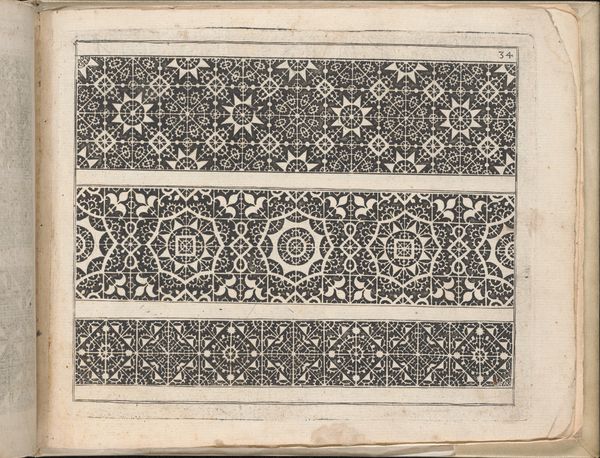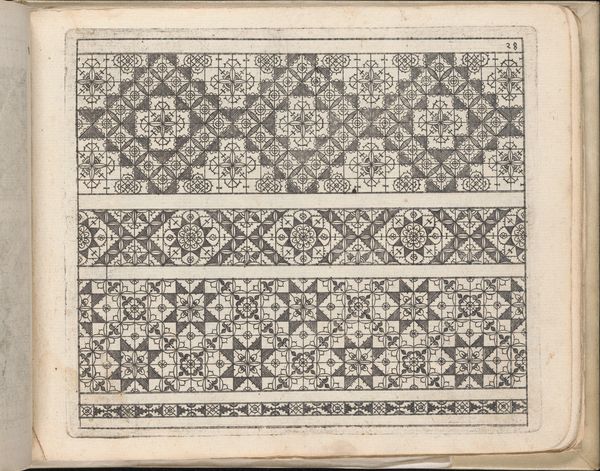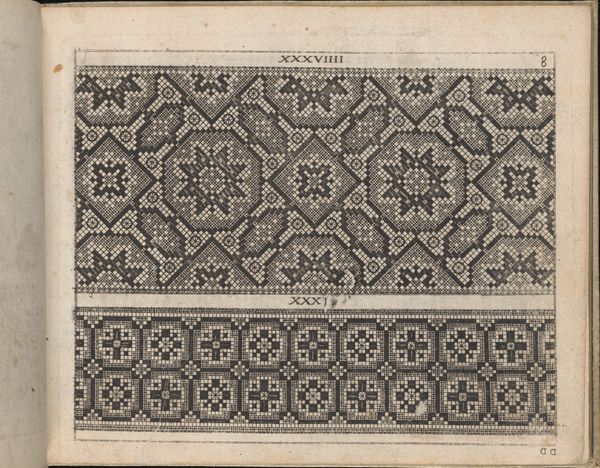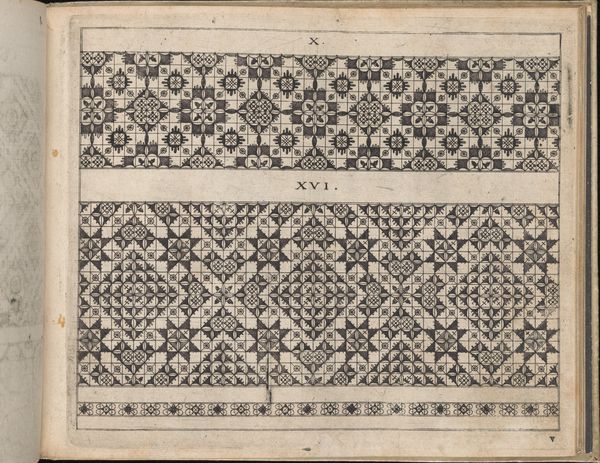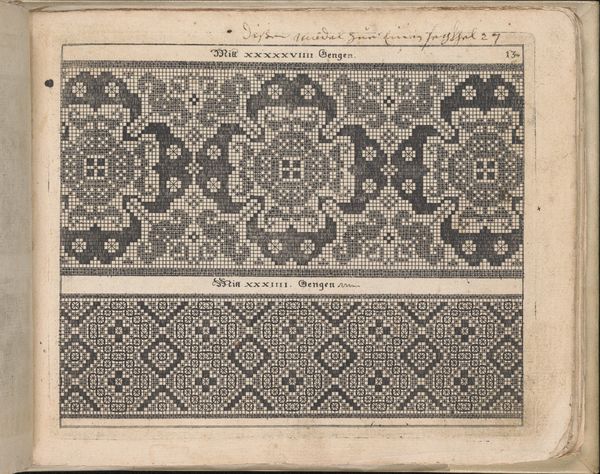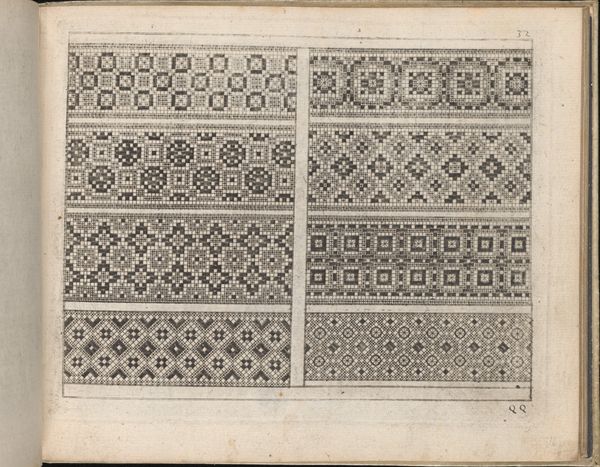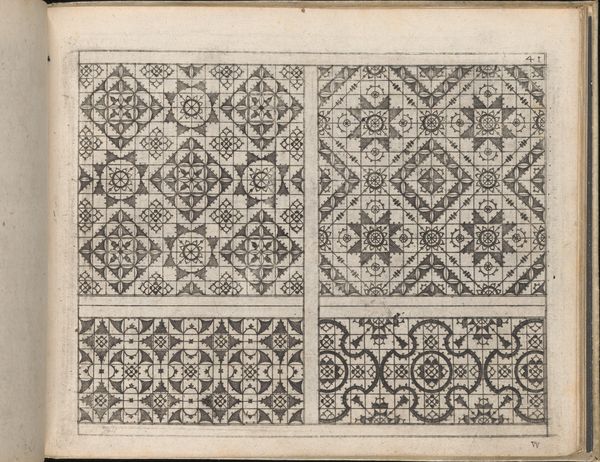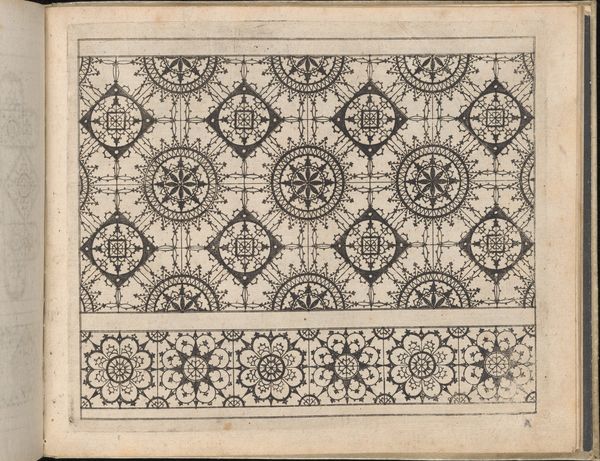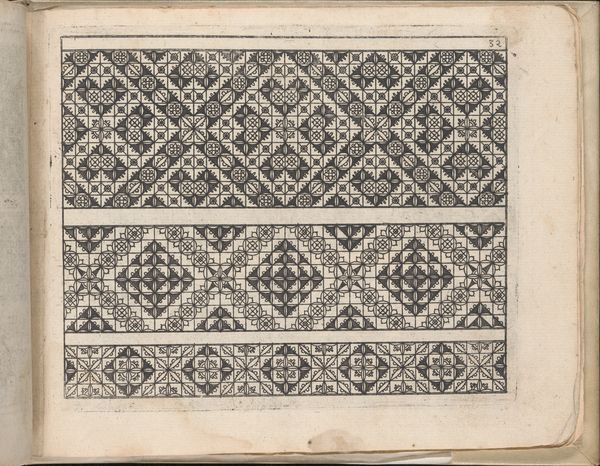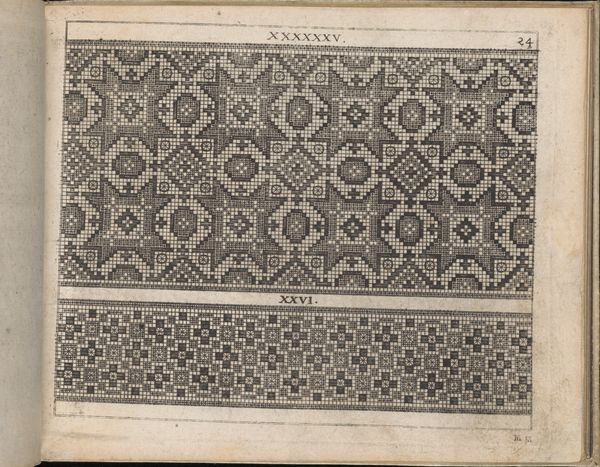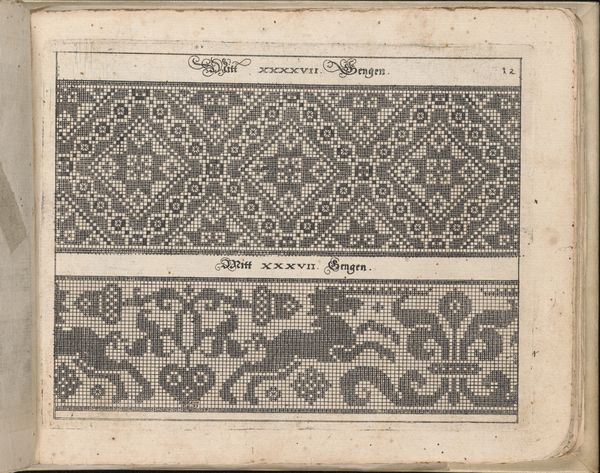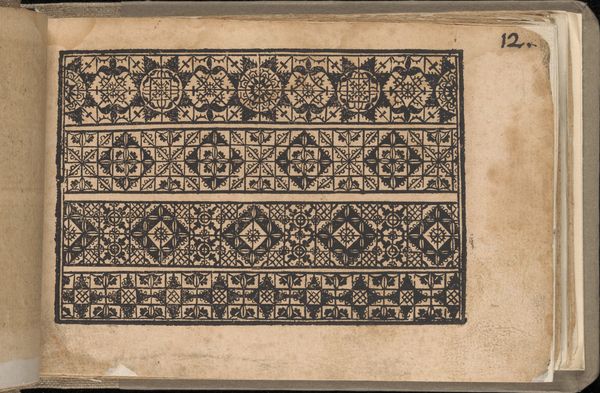
drawing, ornament, print, paper, ink
#
drawing
#
ornament
#
medieval
#
ink paper printed
# print
#
book
#
paper
#
11_renaissance
#
ink
#
geometric
#
geometric-abstraction
#
line
#
calligraphy
Dimensions: Overall: 5 11/16 x 7 1/16 x 3/4 in. (14.5 x 18 x 1.9 cm)
Copyright: Public Domain
Editor: This is a page from Johann Sibmacher's "Newes Modelbuch in Kupffer," created in 1604. It's an ink print on paper, showcasing geometric designs. The intricate linework is just captivating! What compositional elements stand out to you? Curator: The piece operates through a rigorous application of geometric principles. Note the strategic use of the circle and the square. How they interact dictates the overall visual texture and dynamism of the composition. Do you observe how the repetition of these shapes creates a compelling rhythm across the page? Editor: Yes, the repetition is very clear. It’s interesting how the shapes create these different patterns within the two registers. It feels balanced, even though they are slightly different. What do you make of the lines, are they purely decorative? Curator: I wouldn't be so quick to assume a purely decorative function. The line, in this context, is constitutive. The very act of delineating these shapes creates them. Observe the weight and directionality of the line itself. The variations therein generate light, shadow, and ultimately, form. Editor: So it’s more than just filling space, it's about creating structure with line? Curator: Precisely. The inherent quality of the line, in its density and direction, contributes significantly to our understanding of form. Note that it gives an appearance of order and a clear structural framework to the page. Editor: That's fascinating, I didn't think about the lines having such an important structural role. Curator: Examining the building blocks of an artwork lets us engage with its intentionality and effect in new and transformative ways.
Comments
No comments
Be the first to comment and join the conversation on the ultimate creative platform.
